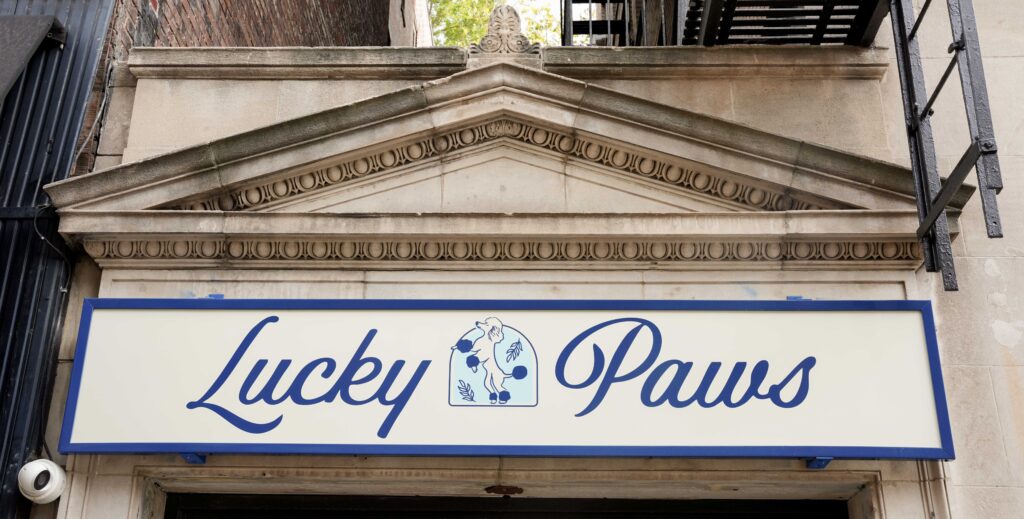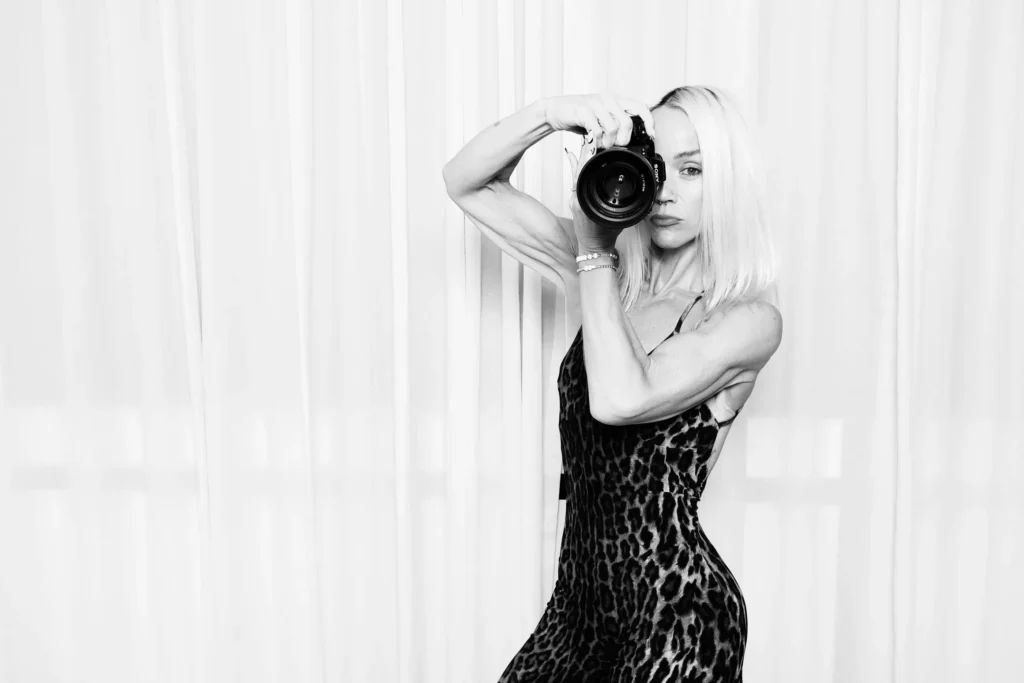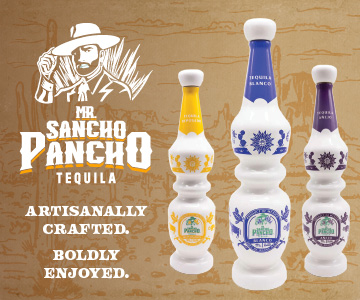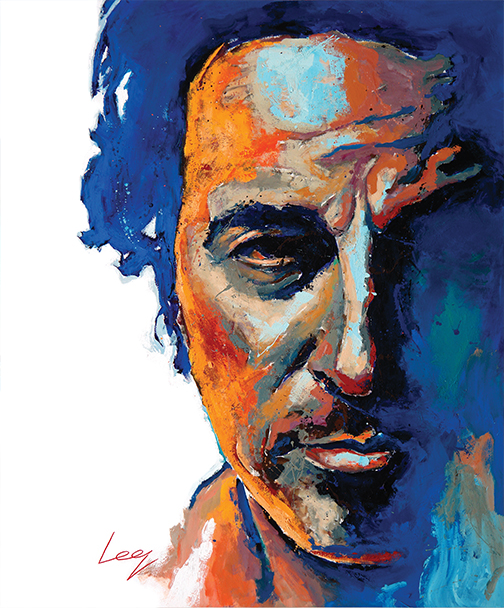 How did the Bruce Springsteen piece come about? What do you want people to feel when they see work like this?
How did the Bruce Springsteen piece come about? What do you want people to feel when they see work like this?
I always try to paint the people I find interesting. In the case of Bruce Springsteen I have a very deep sense of respect and admiration for both his music and him as a person. He has a strong character and transcends a very positive energy. He is the kind of artist that will always be a point of reference for inspiration today as well as for the coming generations. Through his portrait I wanted to externalize his determination. The base of the painting has blue and orange tones. The two of them combined are perceived even more intense, more clear given that they are complementary.
I think that in every artistic piece, may it be a painting, a film or a song, many elements affect its final result. Some you can control and others are alien to you. That is why an artist can create pieces that come out round, complete, at a very high level, and in turn the artist himself can do a mediocre job. In the portrait of Springsteen I think that there were a series of factors that make it a special picture. To externalize through the painting an internal feeling and to make it physical, to translate it into a canvas is not easy. I would like it when people stand in front of Bruce Springsteen’s painting to perceive that energy.
When did you first start your portrait work? What is it about pop culture icons that inspires you?
I have always painted portraits. At first I painted my friends, cartoons or oil portraits. In 2005 I painted a portrait of the Gioconda in a large format, 2 meters by 130 centimeters. In that moment I realized that a large scale face with a firm and dynamic stroke could work quite well. By working the canvas on a large scale, I was able to focus on the painting as if it were an abstraction.
My generation grew up being very influenced by the pop culture of the ‘80s. I love the ability of a character to become a universal social reference. More than the character in question I am interested in the communication process. As a face we can attribute universal values. When we see an image of James Dean we associate it with the rebellion of the individual against the system. With a portrait of Gandhi or Che, we automatically think of revolution.
What I find most compelling about your portrait work is how every painting seems to tell a story. How do you approach your portrait work? What’s your process like?
I am mainly interested in people and their behavior. The face is a window to penetrate their concerns, their fears, their desires. I am fascinated by the ability of a face to convey so much complexity simply with a small gestural change. For me it is not about reproducing an image, but about understanding what is happening in front of me. Interpreting a form, observing how light affects it and transforms it, decoding a silent language that needs to be heard. I try to listen to what some eyes tell me and express it with a vigorous and fluid stroke, a directional line that generates movement.
The process of making a portrait begins by locating the most characteristic features of the face that define a person. Generally the gaze is the feature that defines us most, but it depends on the person. The shape of the lips, for example, can be an essential part that takes us into their personality. Once I analyze his most determining physiological features I look for a photograph that captures his personality well. The search for the image to make the portrait of is one of the most important steps.
Tell me about the LEG Project and the collaboration with David Partida, your childhood friend. How did you reunite?
In 2005 I was living in Barcelona and David moved there too. Both of us were already working as professionals in the art world. We got together and decided to create a common artistic project. We bought a fabric of 10 meters, and painted it in two evenings on a rooftop in Barcelona. During our stay in Barcelona we had the opportunity to meet people from different countries and cultures, very different from ours. I think it made us see the same reality with different approaches. We realized that being in the art world is not just locking yourself in a studio in order to create or produce. You need to know how to handle yourself in other areas that are part of the art industry. You can have a good idea, but if you do not know how to communicate or sell it, you will never pass the door of your workshop. For five years we worked together on the project. In 2010 we decided to go separate ways although we have since stayed in contact.
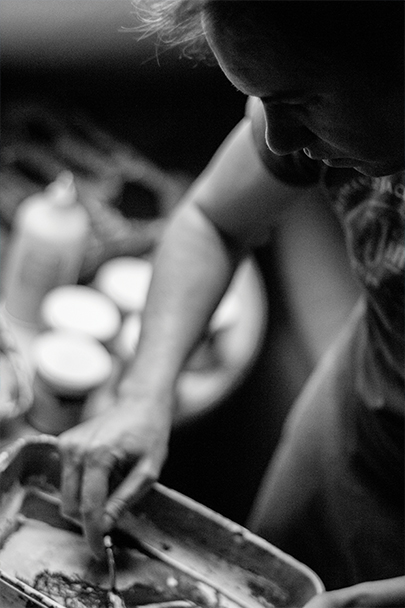 What was the vision for LEG? How would you describe the aesthetic and direction of the project?
What was the vision for LEG? How would you describe the aesthetic and direction of the project?
The vision that we had was always to create a vital project beyond the artistic one. The profession of a painter is quite lonely, from the creative process to the physical activity of painting. You spend many hours locked in the workshop. Our idea was to share those experiences, trips, exhibitions, performances, etc, not only among us, but to surround ourselves with people, friends, who collaborated on the project in other facets such as representation, communication, design and organization. The concept was to be closer to a music band than a group of plastic arts.
Each painting we painted was focused as a performance, a visceral impulse. The reflection was prior to starting the painting. Once the portrait began, we let ourselves be carried more by irrational impulses. A constant dialogue between construction and the destruction of forms.
Since going your own way to develop your own vision for the project, you’ve talked about focusing on the portrayal of the individual in modern society. Has that always been your intention or is that idea just now starting to materialize?
Since I started focusing my work on portraits I have always tried to have my vision of the society that we live in, reflected in my work. Through portraits, they show the capability of human beings without hiding its imperfections, I don’t wish to stay in the surface of our own attitudes. There are always hidden motives which are determining the way we choose to act in any given situation. To explore these hidden reasons that move our emotions, turns my work into a fascinating journey.
Which artist (if any) has most inspired you throughout your career? Do you ever reference them?
I am mainly inspired by people I have met throughout my life. I know a lot of people who are artists and/or work with artistic projects and others who don´t. All of them enrich you in one way or another. To paint, you really only need a space and paint. In order to create, you need something else; a context to explore, a belief to externalize, a glance that will make you change. Amongst the painters that have inspired my work the most are masters such as Francis Bacon, Gustav Klimt and Picasso. There are also contemporary artists such as Jenny Saville, Lita Cabellut, Jeremy Mann and Cian McLoughlin who are also references to me.

